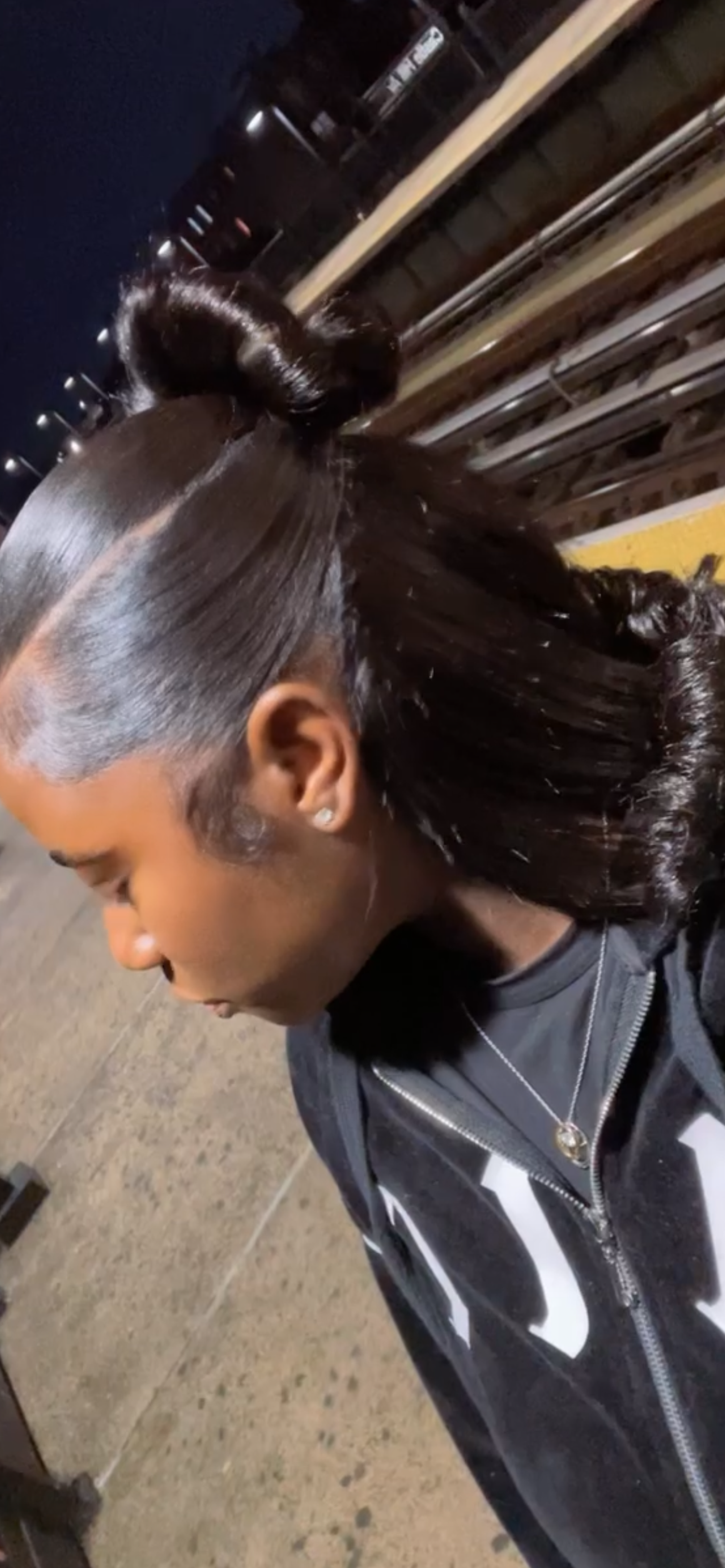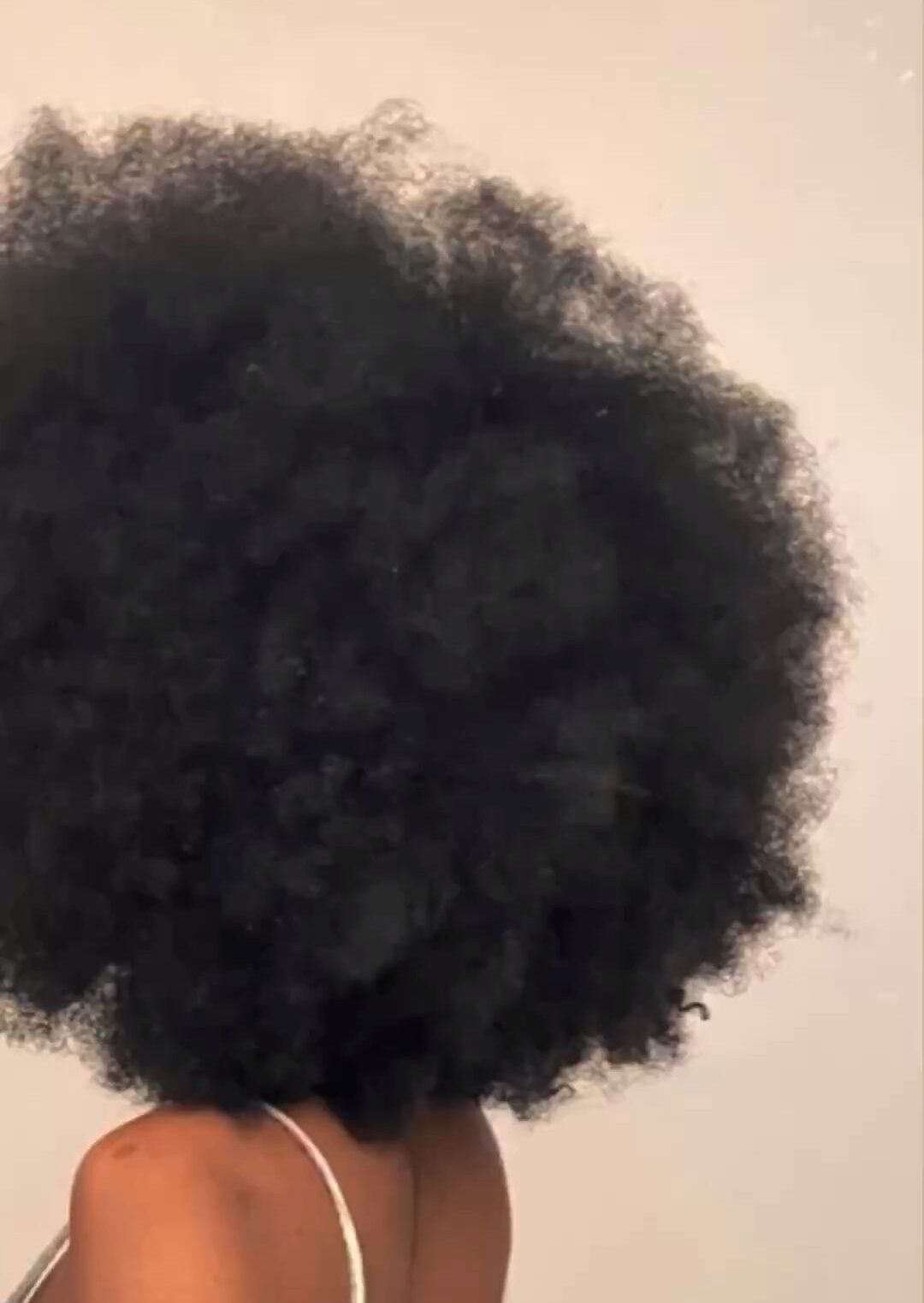My Ever-Evolving Hair Journey: From Natural Hair to Sew-Ins and Beyond
The decision on what to do with my natural hair takes up a lot of mental space. Between finding a good stylist, setting aside time, and factoring in the cost, there’s always something to consider. This became even more true when I stopped relaxing my hair.
For years, the natural hair movement dominated social media, shaping perceptions of what “going natural” should look like. If you were on YouTube from 2015 onward, you probably remember the surge of wash day routines, hair tutorials, and product recommendations tailored to every curl pattern. Events like Natural Hair Fest celebrated the versatility of Black hair, and suddenly, natural hair products were more accessible than ever.
While movements centered around Afrocentric features like afros have a long history, the mid 2010s brought a modern, mainstream revival that redefined what embracing natural hair meant.
The “Big” Chop & My Natural Hair Learning Curve
In 2017, during my first semester of college, I did what I call a “medium chop.” I hadn’t relaxed my hair in several months, and while I never felt pressure to ‘go natural,’ curiosity got the best of me. After taking out my braids, I grabbed scissors and cut off most of my relaxed ends. For the first time, I saw my natural texture in its full form.
As someone who primarily relied on salons, I didn’t realize how much work my natural hair required. It ‘forced’ me to take care of my own hair. Before, my routine consisted of relaxers every 3-4 months, Dominican blowouts, braids, and eventually sew-ins when my mom felt I was grown enough (15 or 16 yrs old). But now, I had to figure out wash day routines, detangling, trimming, and the right products—none of which came naturally to me.
While my hair remained healthy thanks to regular trims and minimal chemical use, transitioning to fully natural meant trial and error. Some might argue that your hair can’t be completely healthy if it’s relaxed—and to that, I say, fair point.
I struggled with the wrong products, improper detangling, and inconsistent trims. Wash days felt like a chore. But over time, I learned to care for my hair and appreciate the process, even if I never truly love doing my own hair.
Considering a Change
Fast forward to today—I’m itching for a change. That change might look like chemically straightening my hair again or leaning into the ‘straight natural’ life… 🤭.
Hear me out!

While I’ve embraced my kinky curly hair, I won’t lie; natural hair requires time and effort. I love silk presses, but my hair reverts quickly, and maintaining straight styles often means sacrificing gym sessions or outdoor activities.
I’m not sure if I want a permanent relaxer—I still love my natural texture and would want the option to transition back. But I also want versatility for styles like sew-ins and half wigs that blend effortlessly. I’m still in the process of figuring it out.
My Next Move: Trying a Flip-Over Sew-In
As a compromise, I’m trying a flip-over sew-in! For those unfamiliar, this is a protective style where most of your natural hair is braided down while extensions are sewn in, leaving out a small section of hair for blending.
It creates a seamless, no-part look with added volume and movement.
I chose this style because I didn’t want to deal with any kind of lace. Plus, I’ve had a kinky curly texture on my mind for months, and the flip-over method offers more flexibility while blending effortlessly with my natural hair.”
By the time you’re reading this, I’ll have been rocking my flip-over sew-in for a couple weeks. I’ll follow up soon with a review of my experience!
The Salon Experience: A Black Girl’s Ritual
Beyond hairstyles, I miss the salon experience—the feeling of a stylist knowing my hair, the euphoric scalp scrub at the shampoo bowl, and the confidence boost of walking out with a fresh style. Finding the right hairstylist is a process, but I’m up for the challenge.
The Ongoing Hair Journey
As Black women, our hair journeys are personal. Some of us find a signature style and stick to it, while others experiment with heat, color, and textures. I’m still in my exploratory phase, searching for what feels authentic and practical for my lifestyle.
Until then, I’ll keep nurturing my hair the best way I can.



Let’s Keep the Conversation Going!
How do you like to wear your hair? Do you experiment with heat, colors, and textures, or do you prefer a signature style? Let me know in the comments! And don’t forget to subscribe to THE REFINED LIFE for more on beauty, style, and self-care.
Subscribe to THE REFINED LIFE Newsletter!
To keep up with your girl and be notified every time I post!

13 responses to “Protective Styles & My Natural Hair Care: My Personal Hair Journey”
http://terios2.ru/forums/index.php?autocom=gallery&req=si&img=4545
Good https://is.gd/tpjNyL
Very good https://is.gd/tpjNyL
Awesome https://shorturl.at/2breu
Awesome https://lc.cx/xjXBQT
Awesome https://lc.cx/xjXBQT
Good https://lc.cx/xjXBQT
Very good https://lc.cx/xjXBQT
Very good https://lc.cx/xjXBQT
Awesome https://lc.cx/xjXBQT
Awesome https://t.ly/tndaA
Awesome https://t.ly/tndaA
Very good https://is.gd/N1ikS2